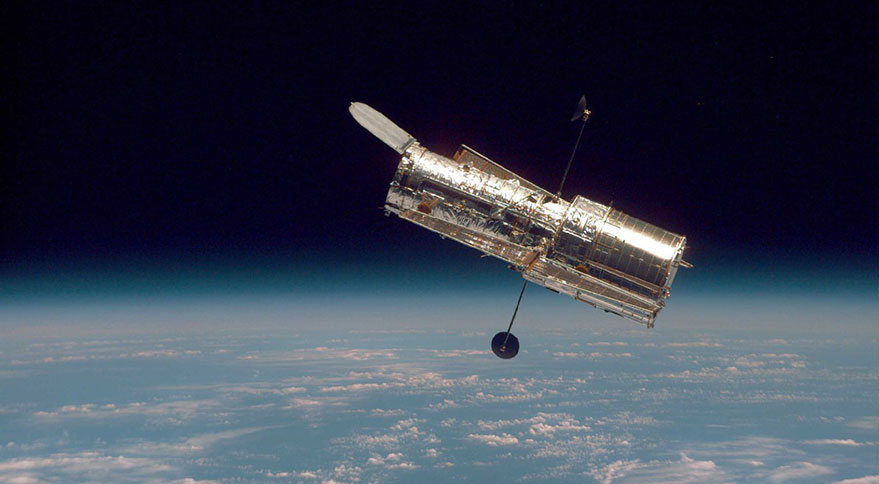WASHINGTON — NASA’s Hubble Space Telescope resumed observations March 11 after a software error placed it in a protective safe mode several days earlier, but the incident is a reminder of the telescope’s mortality.
NASA said Hubble resumed observations at 8 p.m. Eastern March 11, more than four and a half days after a software error caused the spacecraft to go into a safe mode, suspending normal operations of the nearly 31-year-old space telescope.
The software error was traced to what an agency statement called an “enhancement” recently uploaded to the spacecraft. That enhancement was intended to compensate for fluctuations from one of the telescope’s gyroscopes, but a glitch in the software caused a broader problem with Hubble’s main computer, triggering the safe mode early March 7.
Controllers resolved the problem for now by disabling that software enhancement, and plan to correct the flaw and test the new software further before uploading it again.
That safe mode, though, caused two other problems with Hubble. The telescope’s aperture door, a cover on top of the telescope, is designed to automatically close when the spacecraft enters safe mode to prevent stray sunlight from entering, which could damage instruments and optics. During this safe mode, though, the door did not swing shut, a problem never before seen with Hubble.
Engineers troubleshooting the problem found that the door did close once they switched to a backup motor. They have now set that motor as the primary one as they continue to study the problem with the other motor.
One of Hubble’s instruments, the Wide Field Camera 3, “experienced an unexpected error” during the recovery from safe mode. NASA did not elaborate on the error but said that observations using that instrument will remain on hold as engineers study the problem. The spacecraft’s other instruments, including a camera and two spectrographs, are functioning.
The safe mode, and related issues, is a reminder of Hubble’s age. The spacecraft was launched in April 1990 and serviced by the space shuttle five times, most recently in May 2009. With the shuttle long since retired, astronomers know that, at some point, Hubble will suffer an unrecoverable failure that will end its historic mission.
“Right now we’re in the middle of what I think is a very good news story about Hubble,” Jennifer Wiseman, an astronomer at NASA’s Goddard Space Flight Center, said at a conference last year about the space telescope. She and others believe that the telescope can remain operational through much of this decade, based on trends in the performance of key components, such as its gyroscopes and batteries.
Some have argued for a new servicing mission to Hubble using either a robotic or crewed spacecraft. John Grunsfeld, a former NASA astronaut who flew on three Hubble servicing missions and later served as the agency’s associate administrator for science, presented a concept last year for a crewed servicing mission using an Orion spacecraft and a module equipped with a robotic arm and airlock. That spacecraft would dock with Hubble, with astronauts then performing repairs much as they did on past servicing missions.
“We have the technology to go back to Hubble,” he said in a presentation last June to the Space Transportation Association, noting that a commercial crew vehicle, like Crew Dragon, could be used in place of Orion. “We could keep Hubble going for another few decades.”
NASA, though, has shown no public interest in such a servicing mission, whose expense would run in the hundreds of millions to billions of dollars. “It’s not currently on the books. Nobody is really talking about it a lot, at least publicly,” Grunsfeld acknowledged.
Without a servicing mission, Hubble could last for many years, or fail tomorrow, astronomers like Wiseman acknowledge. “We don’t know how long Hubble’s going to last,” she said.
